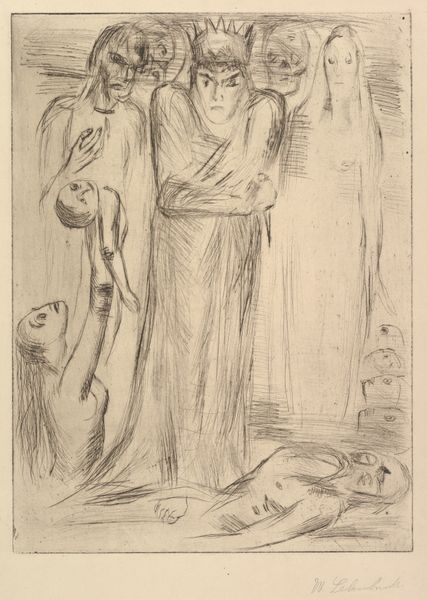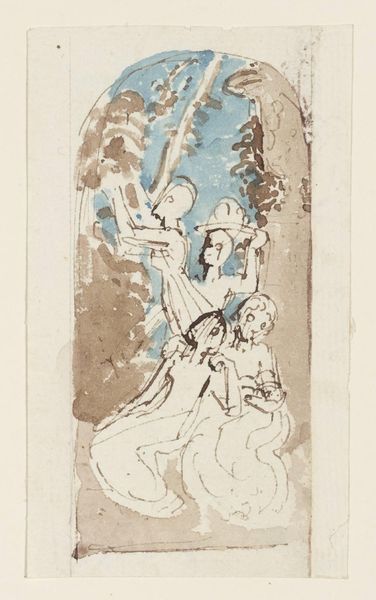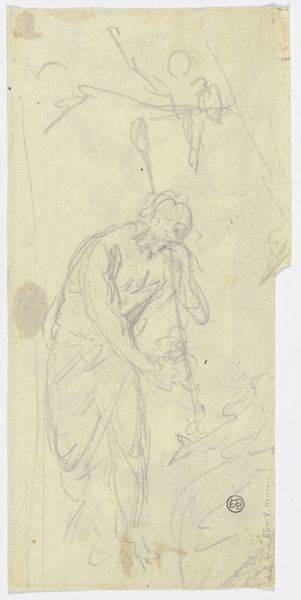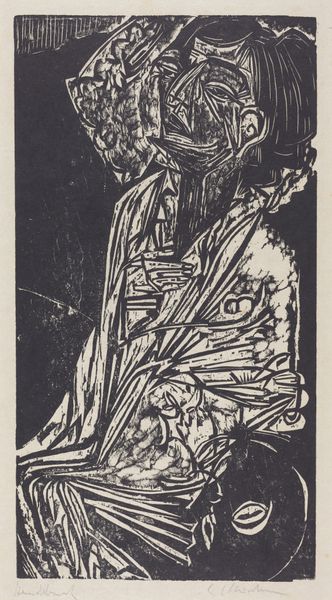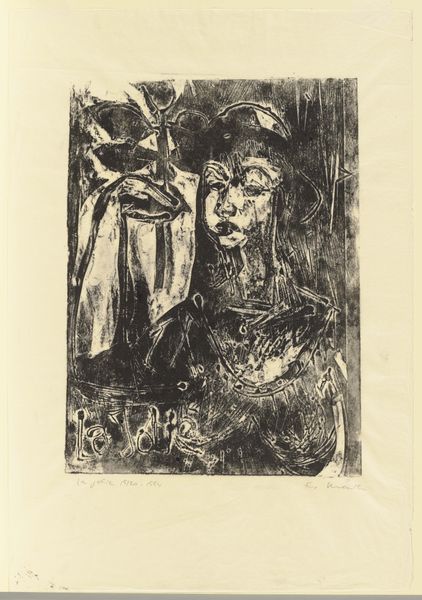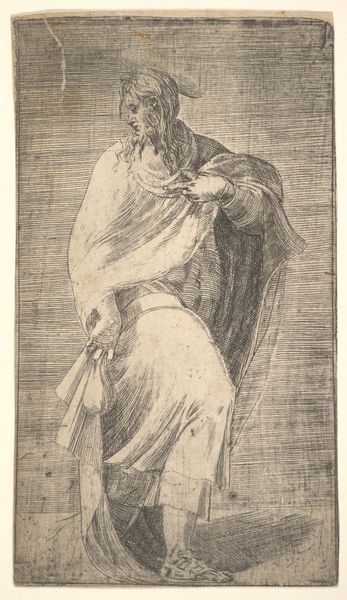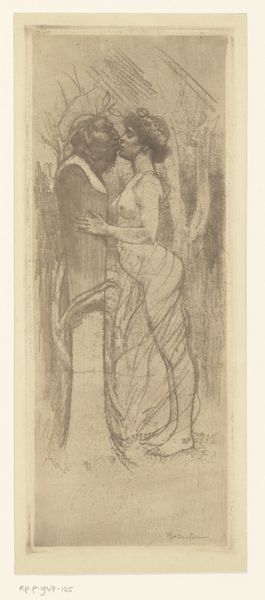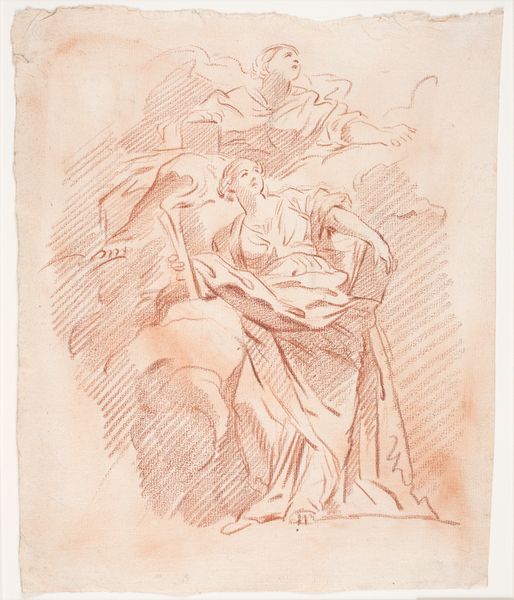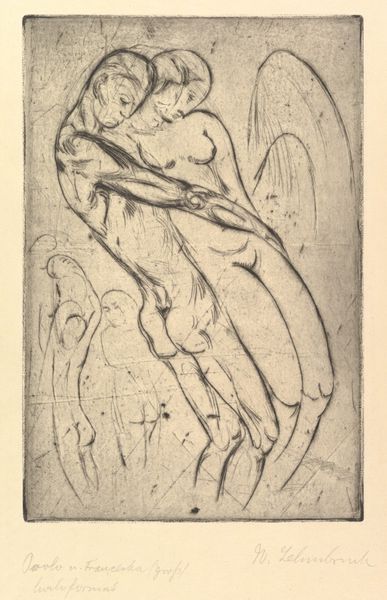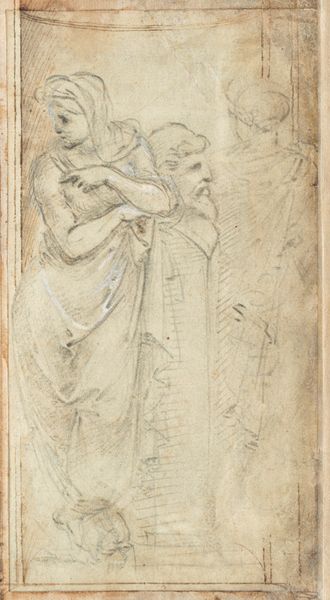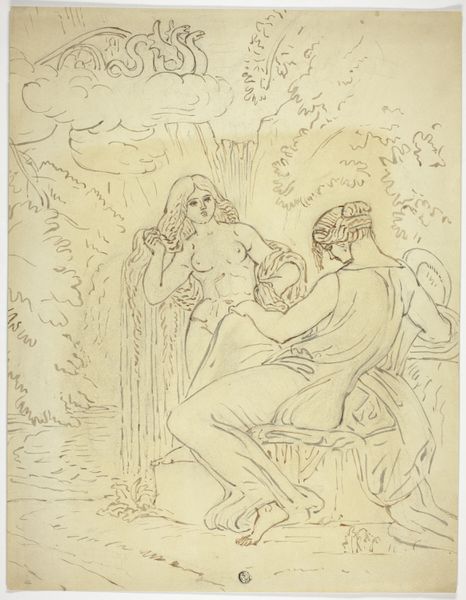![Two Tahitians Gathering Fruit [verso] by Paul Gauguin](/_next/image?url=https%3A%2F%2Fd2w8kbdekdi1gv.cloudfront.net%2FeyJidWNrZXQiOiAiYXJ0ZXJhLWltYWdlcy1idWNrZXQiLCAia2V5IjogImFydHdvcmtzLzZlMDdjMjFiLTY5NjUtNDFkNS1iNGNlLTAzNDdkNmJlMDRjZC82ZTA3YzIxYi02OTY1LTQxZDUtYjRjZS0wMzQ3ZDZiZTA0Y2RfZnVsbC5qcGciLCAiZWRpdHMiOiB7InJlc2l6ZSI6IHsid2lkdGgiOiAxOTIwLCAiaGVpZ2h0IjogMTkyMCwgImZpdCI6ICJpbnNpZGUifX19&w=3840&q=75)
drawing, pencil
#
drawing
#
pencil sketch
#
figuration
#
pencil drawing
#
pencil
#
portrait drawing
#
post-impressionism
Dimensions: overall: 62.8 x 51.5 cm (24 3/4 x 20 1/4 in.)
Copyright: National Gallery of Art: CC0 1.0
Curator: This delicate pencil sketch, "Two Tahitians Gathering Fruit," was rendered by Paul Gauguin around 1899-1900, likely while he was living in Tahiti. It almost seems like a ghostly apparition at first glance. Editor: I agree. There's something unfinished, dreamlike about it. The cool blues and grays give it a somber, almost melancholic air, despite depicting such a quotidian act as gathering fruit. Curator: Perhaps "unfinished" is a lens to understand it. These sketches allowed him to work out compositional ideas later applied in paintings and sculptures. But more importantly, these images weren't strictly "documentary." Gauguin selectively employed memories, fantasies, and local models—a production heavily reliant on colonial infrastructure. Editor: Right, it wasn’t objective ethnography. These drawings reflect an artistic and commercial exchange—Gauguin relying on local economies to produce sketches for consumption back in Europe. Think of the pencils, the paper, their distribution networks, and the exoticizing gaze they facilitate. Curator: Yes, these sketches contributed to his constructed mythology around Tahiti and its people, becoming highly desirable art objects and shaping our ongoing image of the islands, though somewhat skewed through his own colonialist perspective. Editor: Colonialism commodified both land and representation. And these quickly rendered sketches? They underscore that. What looks effortlessly captured belies complex systems of resource extraction and power dynamics. Curator: It invites reflection—how desires can manipulate perceptions, and art can function as a material object within a complex, often exploitative system, without undermining its potential power. Editor: Indeed. An image can appear beautiful while also embodying inequalities. We need to appreciate both aspects simultaneously.
Comments
No comments
Be the first to comment and join the conversation on the ultimate creative platform.

